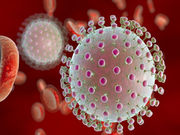Second study shows evidence for link between Zika infection, congenital CNS malformations
THURSDAY, June 30, 2016 (HealthDay News) — Zika virus congenital syndrome is a new teratogenic disease, with many definite or probable cases presenting with normal head circumference values, according to research published online June 29 in The Lancet.
Giovanny V.A. França, Ph.D., from the Ministry of Health in Brasilia, Brazil, and colleagues reviewed 602 cases. Of these, 76, 54, 181, and 291 were definite, highly probable, moderately probable, and somewhat probable for congenital Zika virus syndrome, respectively. Head circumferences in the normal range was found for one in five definite or probable cases. For one-third of definite and probable cases, there was no history of a rash during pregnancy.
“Zika virus congenital syndrome is a new teratogenic disease,” França and colleagues write. “Because many definite or probable cases present normal head circumference values and their mothers do not report having a rash, screening criteria must be revised in order to detect all affected newborn babies.”
In a second study, Roosecelis Brasil Martines, M.D., from the U.S. Centers for Disease Control and Prevention in Atlanta, and colleagues describe findings from a case series of tissue samples from three fatal cases and two spontaneous abortions associated with Zika virus infection. The researchers found that in all three fatal cases with microcephaly, viral antigens were localized to glial cells and neurons and associated with microcalcifications. In one of the first trimester placentas there were antigens in chorionic villi. “These findings provide strong evidence of a link between Zika virus infection and different congenital central nervous system malformations, including microcephaly as well as arthrogryposis and spontaneous abortions,” the authors write.
Copyright © 2016 HealthDay. All rights reserved.








